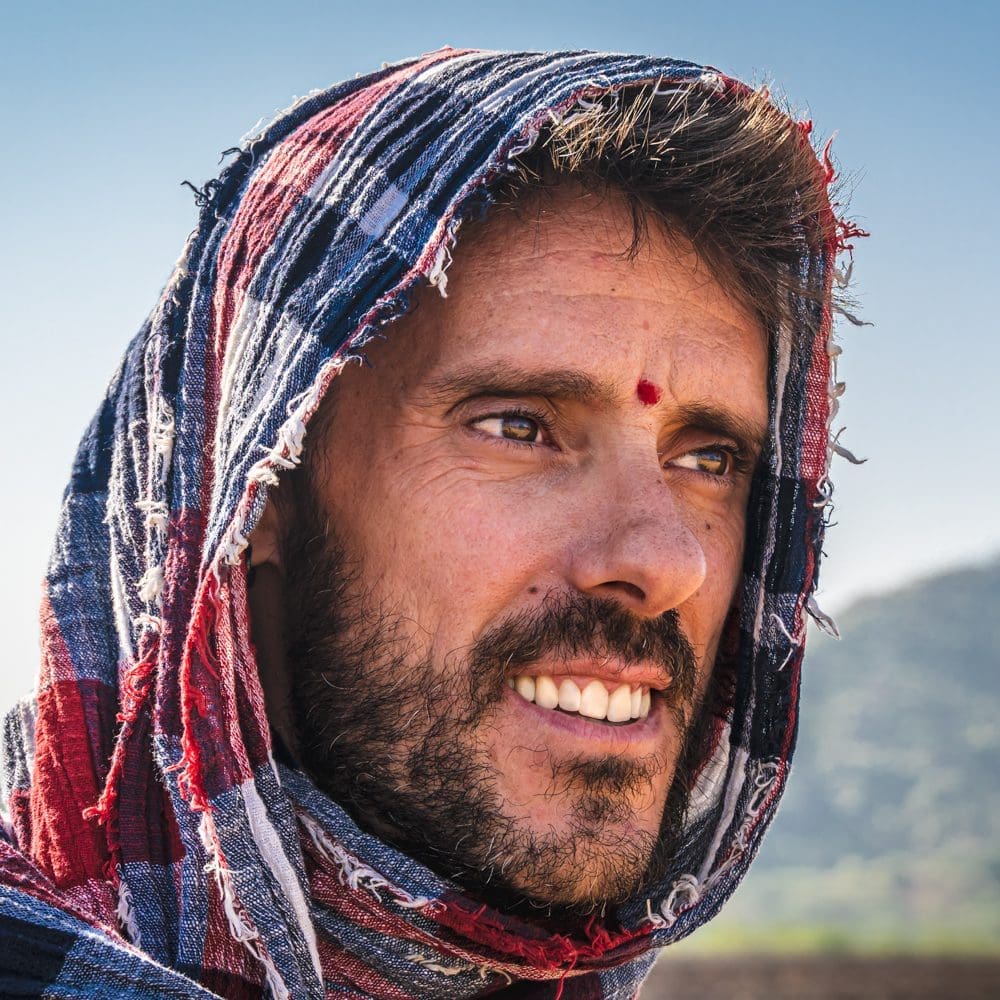When I travel, what stays with me most are the genuine smiles of the people I meet, who very often tell unique life stories.
My alarm clock goes off early: at 6.30 am, I am already ready to go. As frequently happens, I look for the cheapest way to get to a place I am interested in. And very often this way is just walking. Another reason I usually move around on foot or with my own rented vehicle is to try to get in touch with the local people and thus tiptoe into a culture different from my own.
I am in Cambodia. This morning, eager to meet the people living in the floating village of Kampong, I embark on a 45-minute walk towards the Tonle Sap River. Forty-five minutes of walking in Cambodia means a lot of heat and dirt roads. As large cars or lorries pass by, a dust of red earth rises like a toxic cloud that sticks to my clothes and my sweaty skin. On the way, it is easy to encounter cows and sheep grazing freely and a few small water holes with many lotus flowers.

Off the beaten track
Arriving at the Tonle Sap River, the first thing I notice are small, long boats darting back and forth, making a great racket. I start walking along the riverside. People smile and greet me, especially children. Intrigued, they look at me in disbelief at seeing a foreigner passing by. On the other hand, after two years of the pandemic and the relative closure of the country, many of them have never seen a foreigner.
I begin to feel a little closer to people. Getting acquainted, I approach the first houseboat. This is nothing more than a boat with a small jetty surrounded by lotus flowers and other vegetation. A Vietnamese lady invites me in and offers me a really tasty mango.
As is often the case here, communication is difficult. Few people speak English, but the universal language of gestures always manages to break down all the language barriers. I continue my exploration and make the acquaintance of two more Vietnamese ladies. One of them is busy preparing Goi Cuon. These are rice paper rolls filled with vegetables and prawns. They may also contain other types of meat such as pork. They are a true Vietnamese delicacy.
Children, the real strength of the village, can go to school thanks to the school bus in a boat version. They can attend classes and learn to read and write like many of their peers. As happens often here in Asia, children are always smiling and are intrigued by my presence. They look at me. They analyse me. Some greet me and laugh loudly when I return the greeting. Others, a bit shyer, wait a few seconds before trusting me, but when they do, they give in to huge, joy-filled smiles.

Between smiles and uncertainties
For those wondering why I insist on writing that people here are Vietnamese, it is because in this part of the country, most people have Vietnamese origin, having migrated from the west of Vietnam and settled along the Mekong and the Tonle Sap to make a living from fishing, trading and all that these two rivers have to offer. As a result of the Indo-Chinese conflict of the last century, the current Cambodian law does not allow Vietnamese to settle on the mainland permanently. Those without Cambodian citizenship are not allowed to build or buy property on land, which is why the inhabitants of Kampong Chhanag created their village on the water.
In the eyes and smiles of the people who live here, there is no hatred or anger due to this discrimination. They are smiling people who are eager to let a stranger into their humble home and share a few moments of their everyday life with him.
Here, in the village of Kampong Chhnang, I breathed in the daily life of the people who inhabit these waters and share moments of genuine familiarity. It was a real immersion in a culture very different from mine, but one that is experienced by people who are exactly like me. Because customs, traditions or skin colour may change, but we are all one humanity and we all live under the same roof!


